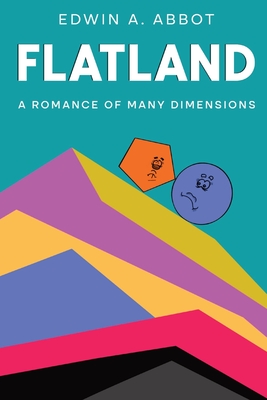Section 19: How, though the Sphere shewed me other mysteries of Spaceland, I still desire more; and what came of it
bySection 19 opens with the Sphere continuing his mission to broaden the Square’s perception by introducing more complex concepts of geometry. A cube, to the Square, initially seems like nothing more than a strange distortion of familiar shapes. He struggles to reconcile what he sees with what he knows, finding it difficult to accept that something as foreign as height could be real. The Sphere responds by demonstrating how a square, replicated upwards, creates a solid with depth. He carefully introduces the ideas of shade and perspective, encouraging the Square to observe how light behaves differently on solid shapes. These lessons begin to stir something deeper in the Square—a realization that not all reality is confined to flat surfaces. Through demonstration and thoughtful explanation, the Sphere opens a small door in the Square’s rigid thinking. That door leads not only to understanding but also to a longing to explore beyond what has ever been taught in Flatland.
The Square, now beginning to grasp the radical concept of solids, grows more curious and courageous in his questions. He asks to see the inside of the Sphere, hoping it will provide further clarity about the third dimension. His desire isn’t just to see but to comprehend—to break through the wall of his limited perspective. The Sphere, amused but stern, denies the request, explaining that such knowledge is not easily granted. The conversation soon shifts as the Square, emboldened by his new understanding, proposes the idea of a fourth dimension. Drawing from the pattern of moving from point to line, line to square, and square to cube, he posits that there must be a next level. His reasoning is methodical, echoing principles found in higher mathematics and logic. While the Sphere dismisses the idea as fanciful, the Square presses on, suggesting that every new dimension reveals something unseen in the last.
This back-and-forth begins to reveal deeper themes about human learning and resistance to new ideas. The Square’s persistence reflects humanity’s drive to explore the unknown, while the Sphere’s reluctance shows how even enlightened minds can fall into dogma. The Square continues with analogies, imagining that just as Flatlanders cannot see the third dimension, Spacelanders might be blind to a fourth. He likens it to listening for sounds in a silent room—just because it can’t be heard doesn’t mean it doesn’t exist. The dialogue becomes a delicate dance between possibility and limitation. Eventually, the Square’s enthusiasm is met not with curiosity, but with irritation. The Sphere scolds him, stating that such thoughts are dangerous and delusional. Though disappointed, the Square silently promises himself to keep exploring these ideas.
As the chapter progresses, the Square’s inner transformation becomes more evident. His worldview, once confined to edges and angles, now buzzes with questions about what lies beyond the visible. The Sphere’s teachings have sparked not just a geometric revelation, but a philosophical awakening. The Square is no longer satisfied with mere answers—he seeks understanding, a trait that mirrors scientific progress. Real breakthroughs, after all, begin with the willingness to ask absurd questions. As the conversation closes, the Square contemplates whether the beings in dimensions above Spaceland might visit lower ones, invisible and incomprehensible to those they pass through. He wonders whether visions and dreams could be such visitations, misunderstood due to dimensional ignorance. Though speculative, his thoughts challenge readers to reflect on the unseen complexities of their own reality.
This moment becomes a pivotal point in the narrative. The Square, who once accepted Flatland’s rules without question, now stands as a symbol of intellectual rebellion. He represents all seekers who question the boundaries set before them. His interaction with the Sphere shows how difficult it is to push beyond current understanding when even the enlightened resist progress. The final tone is one of quiet conviction. Though dismissed, the Square believes he has glimpsed a greater truth. He vows to pursue it, even if he must do so alone. The lesson is clear: curiosity is a risk worth taking, even if the world refuses to understand.


